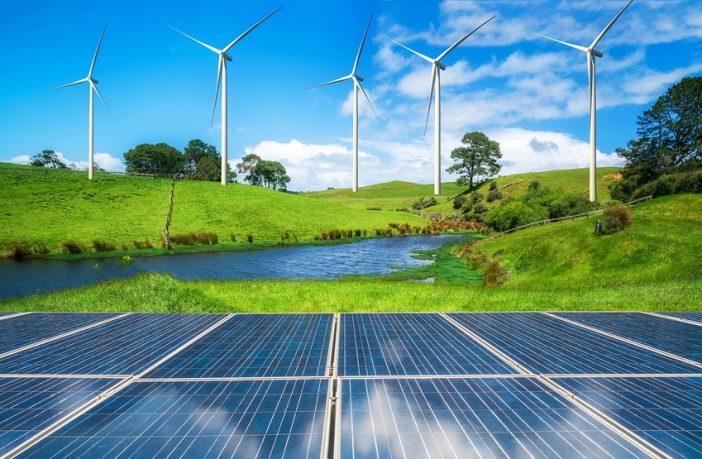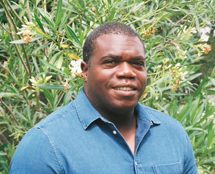Opinion
The South African government’s recent Independent Power Producer (IPP) contracts has sparked a lot of debate in the country (Such a big contract to Turks!… Corruption is going to run rampant!… The plants are 100% not going to be delivered on time!), but while many have spent a lot of energy bashing this specific round of awards as if it was just a one-off, I once again want to look at it from a more long-term angle, in other words, what we need to do to get better deals when the next round happens.
You must have heard by now that on March 18, 2021, South Africa’s Minister of Mineral Resources and Energy Gwede Mantashe announced the winners of the 2000 megawatts Risk Mitigation IPP Procurement Programme (RMIPPPP) as follows:
- ACWA Power Project DAO.
- Karpowership SA Coega.
- Karpowership SA Richards Bay.
- Karpowership SA Saldanha.
- Mulilo Total Coega.
- Mulilo Total Hydra Storage.
- Oya Energy Hybrid Facility.
- Umoyilanga Energy.
The biggest winner of the award process by a country mile was Karpowership SA, a subsidiary of Turkey’s Karadeniz Energy Group, which stands to make an eye-watering 218 billion Rand or 15 billion USD over the twenty-year contract period. The Council for Scientific and Industrial Research calculates that annual project costs will be in the region of 10.9 billion Rand.
Related news: Risk Mitigation IPP Winners- Projects Details Announced
You may also have heard the Department of Mineral resources and Energy (DMRE) Minister Gwede Mantashe claim at the announcement that the deal was a very good deal, a cost-effective deal and a big deal for South African jobs and transformation. However, and as energy expert Chris Yelland asked Sakina Kamwendo on Morning Live last week, DMRE is selling this as a cheap deal based on what exactly – because it certainly is not cheap?
In seeking quick fixes for South Africa’s energy problems, DMRE probably adopted the same posture that departments of Finance all over the world have when they need to raise cash for government business. You know, they go to money markets, listen to offers and pick a winner. Straightforward. The people do not need to be bothered by the granular intricacies of such complex transactions.
DMRE could have done better. But let’s just pause for a minute and calculate the real cost of this deal. First, emissions. The annual emissions for the Karpowership project component were presented Tony Carnie on March 14 as follows:
- 5 million tons of carbon dioxide equivalent over twenty years;
- Local emissions of about 1,354 tons of nitrogen oxides per year;
- Over 270 tons of PM10 particulate dust pollution; and
- 54 tons of Sulphur dioxide emissions per year.
These calculations do not factor methane, ethane and propane leaks typically associated with such projects. Keep in mind that in terms of greenhouse potency, methane is thirty times more destructive to the environment than CO2. South Africa does not have enough Liquefied natural gas (LNG) for the plants, therefore it has to import. So, for two decades, the country is probably sponsoring a fracking boom somewhere…as well as emissions during liquefaction and transportation.
Now, how do you square the fact that Environment Minister Barbara Creecy is at war with ESKOM right now to install flu-gas desulfurisation units at its plants while across town, her colleagues are blowing up the country’s carbon budget? Remember that South Africa plans to cut its emissions by 28% by 2030 and for that, it will need international support of about R120 billion.
The second real cost relates to jobs. This award very specifically promised to create 3800 job opportunitiesin the initial phase and an additional 13,500 jobs over the twenty-year life cycle. Job opportunities are not real jobs. Furthermore, what effort is going to be made to train and transition former ESKOM employees for these positions and industries? No concrete announcement has been made about this just transition priority. Are we just postponing rolling mass action by unions?
Finally, the duration of the contract. Before this deal, Karpowership had never signed a twenty-year contract anywhere in the world, so why did South Africa hand them such a long deal? The costs of renewables are dropping every year. They will probably be much cheaper than what Karpowership SA is offering the state within the next decade, but the country will be locked into an unfavourable deal for another ten years. That is just stunning. Remember: fuel costs within the contract are variable and the markets will therefore dictate the true cost of this deal.
Now imagine how South Africa could have transformed its grid with R218 billion. Forget the local component of the Karpowership deal for a minute and go along with this scenario – it does not involve ORACLE holding a knife to ESKOM’s neck.
DMRE could have gone another route of course. This IPP award was a major opportunity to lay down a marker, to go big on green energy and really show everybody that when President Ramaphosa delivered his State of the Nation Address on Feb 11 this year, he meant business on the just transition.
The government could have announced that, for the foreseeable future, all energy IPPs and not just the Renewable Energy IPP Procurement Programme (REIPPPP) will be from renewables. It should then have announced what is being invested to prepare workers for jobs in new power companies.
It could also have set up a massive subsidies programme to help low-to-medium income households, farms, businesses etc., buy and install solar panels or even small wind turbines. With the right incentives, hundreds of thousands would have become energy “prosumers” (simultaneously producer and consumer) just like in western Europe.
In England, new laws also empower more than one million homeowner prosumers who install new rooftop solar panels to lower their bills by selling the energy they do not need to their power company. In Ireland, thousands of individuals, farmers, businesses, sports organisations and community groups will be able to sell renewable electricity into the national grid later this year.
What is the cost of providing subsidies for homeowners to buy and install green energy capacity compared to every round of load shedding? South African families would have generated more energy for themselves and sold the rest to ESKOM. This would undoubtedly have created scale and skills and distributed more wealth to more families – at least R218 billion over twenty years. A good post-Covid growth strategy.
For this kind of thinking to prevail though, I have argued consistently that CSOs, trade unions, businesses, etc., need to start pushing government for greater participation in IPP deals. They need to start making a lot of noise about working with ESKOM. This debate cannot be left to the Stellenbosch Municipality alone.
It is not too late. DMRE will release another request for proposals within the next twelve months. This planned round has allocated 3000MW for gas and 1500MW for coal. Communities, labour and homeowners should step forward and claim that 4,500MW coal/gas component.
Author: Dr Roland Ngam
Dr Roland Ngam is programme manager for climate justice and socioecological transformation at the Rosa Luxemburg Foundation, Southern Africa.The views expressed are not necessarily those of the Rosa Luxemburg Foundation or Green Building Africa.

















1 Comment
It seems that there is incoherence in policy making. How does this IPP contract support and promote our climate change agenda and commitments under the Paris Agreement? How can we be considered honest brokers striving to address climate change? How does this agreement speak to sound fiscal management and economic growth never mind other positive spinoffs outlined. As the article points out renewable costs are plummeting a trend set to continue. Have the public health costs been factored in? Simply by addressing fossil fuel emissions results in enormous health savings. Greater cooperative governance required.